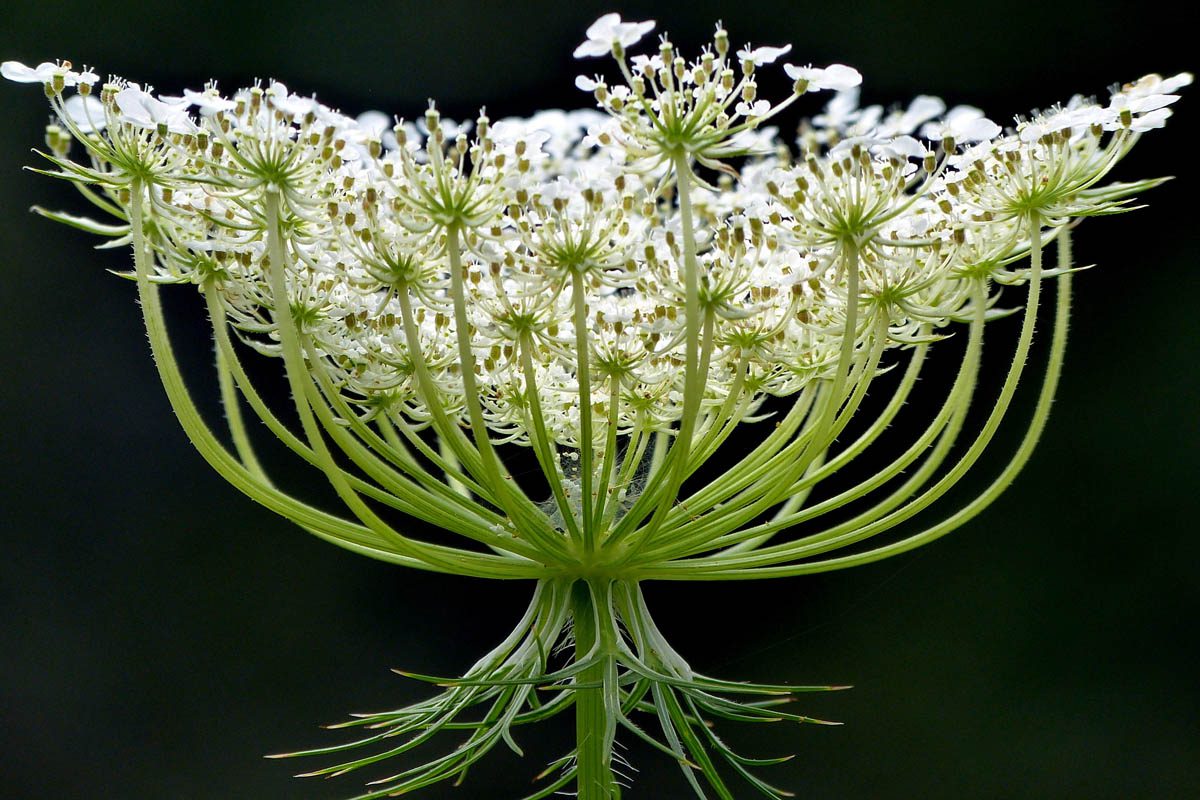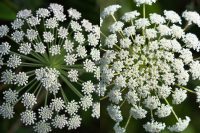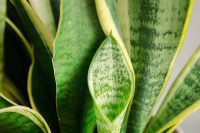Poison hemlock (Conium maculatum) and Queen Anne’s lace (Daucus carota) are biennial plants with similar feather-like leaves and umbel flowers. One is a popular garden plant, the other one is highly toxic. However, the similarity between the two poses a risk due to the high toxicity of poison hemlock which can easily be mistaken for Queen Anne’s lace.
Poison hemlock
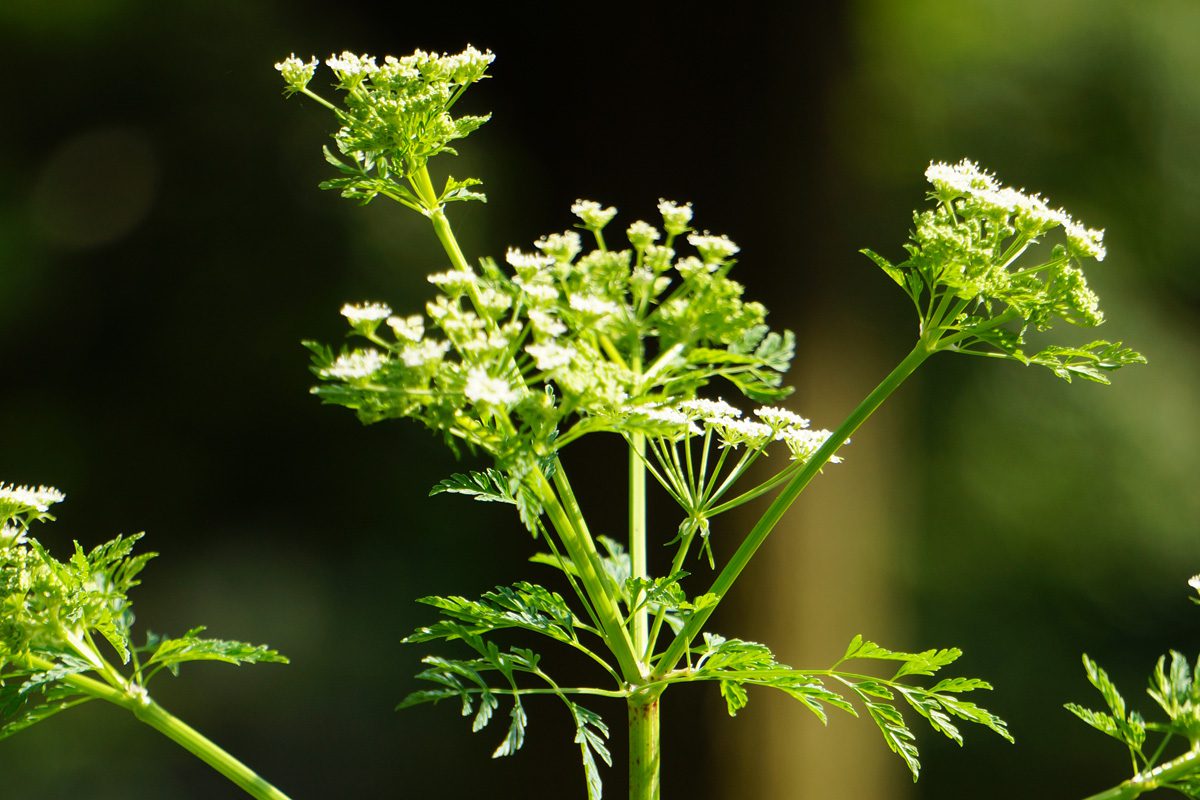
Poison hemlock (Conium maculatum) is a biennial plant native to Europe and North Africa but has been introduced to many other parts of the world. It is known for its high toxicity, which can be fatal to both humans and animals. The entire plant, especially the seeds, contains coniine, which disrupts the functioning of the central nervous system. Ingestion of even a small amount can cause vomiting, paralysis, and, in severe cases, death. Historically, the plant has been used as a method of execution, including the famous death of the philosopher Socrates.
Coniine is an alkaloid that acts on the nicotinic acetylcholine receptors at the neuromuscular junction, blocking the transmission of nerve impulses to the muscles. This can lead to muscle paralysis and even death through respiratory failure. Its symptoms of poisoning are often characterised by a burning sensation in the mouth and throat, nausea, vomiting, and abdominal pain, followed by progressive paralysis of the skeletal muscles.
Poison hemlock (Conium maculatum) is different to water hemlock (Cicuta douglasii), which also has a similar appearance. While both plants are highly toxic, and should not be handled or ingested, water hemlock is considered more toxic, in fact, it is the most violently toxic plant that grows in North America.
Related: Water hemlock vs Queen Anne’s lace
Queen Anne’s lace
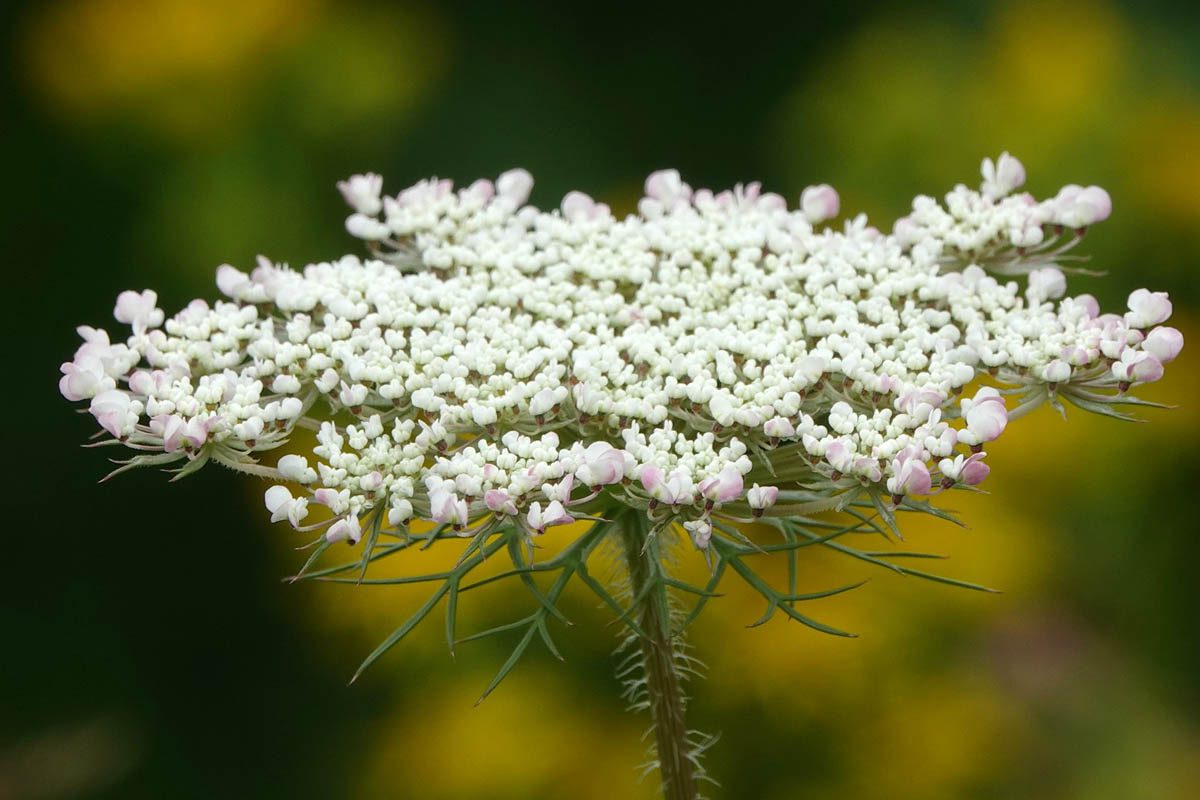
Also known as wild carrot, Queen Anne’s Lace, is a flowering plant native to temperate regions of Europe and southwest Asia, but has naturalised in North America and Australia. This biennial plant can grow to about 1.5 metres (5 feet) tall and has a distinctive white or chocolate, lace-like flower head, or umbel, which closes up in a cup-like shape once the blooming is over. Interestingly, the flower cluster often contains a single dark purple floret in the centre, a feature considered unique to this species. The stems are hairy, solid, and grooved, and the leaves are finely divided and fern-like. The root is long, thin, and edible while young, with a flavour similar to cultivated carrots.
The sap of Queen Anne’s lace contains furocoumarins. If the sap gets onto the skin and the skin is then exposed to strong sunlight, a rash, blisters, and discolouration may occur, similar to a severe sunburn. This reaction is most commonly associated with handling the leaves and stems of the plant. While the roots and flowers have lower levels of these compounds, caution is still advised, especially for individuals with sensitive skin or known reactions to other plants in the Apiaceae family, such as parsnips or celery.
Difference between poison hemlock and Queen Anne’s lace
Characteristics |
Poison hemlock |
Queen Anne’s lace |
| Scientific Name | Conium maculatum | Daucus carota |
| Family | Apiaceae (Carrot family) | Apiaceae (Carrot family) |
| Origins | Europe and North Africa | Europe and Southwest Asia |
| Flower colour | White | White, chocolate |
| Flower type | Flat-topped clusters | Small, white flowers in a flat-topped cluster (umbel), often with a single dark red flower in the centre |
| Bloom time | Early to late spring | Summer to autumn (fall) |
| Bracts | Absent | Bracts that resemble a bird’s nest, are located where the flower stems meet the main stalk. They are divided into three or more finely divided, narrow segments, giving them a feathery or spiky appearance. |
| Leaves | Alternate, serrated | Compound, pinnate, with finely divided, fern-like leaves |
| Stem | Chambered, purple blotches | Hairy, solid, not mottled or striped (“the Queen has hairy legs“) |
| Root | Ruberous | Edible when young, resembles a carrot |
| Seeds | Ridges and grooves | Oval and covered with tiny, fine bristles |
| Smell | Unpleasant, musty | When crushed or bruised, the plant (especially the root) smells like a carrot |
| Height | 94-300 cm (3-10 feet) | 94-180 cm (3-6 feet) |
| Habitat | Disturbed areas, moist soil | Prefers drier habitats, often found in meadows, pastures, and along roadsides |
| Toxicity | High toxicity (cicutoxin) | Low toxicity if consumed (furocoumarins) |
Flowers
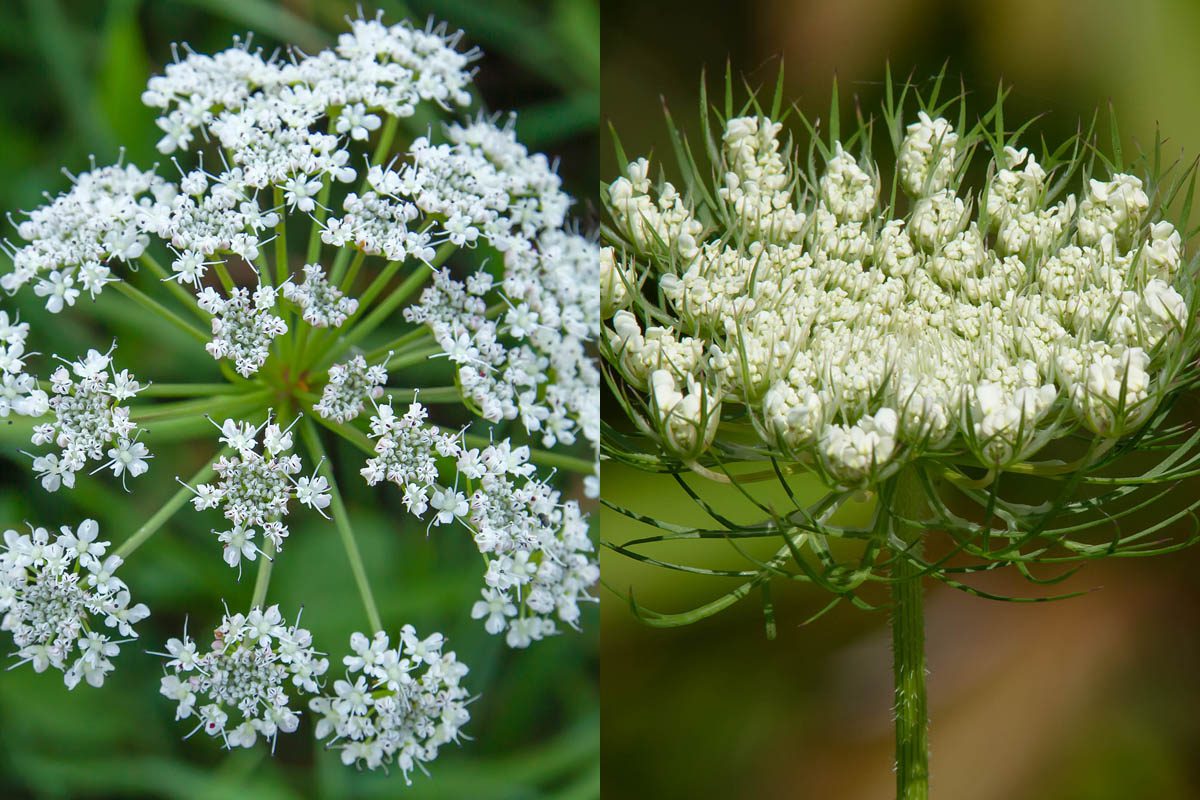
Leaves

Stem
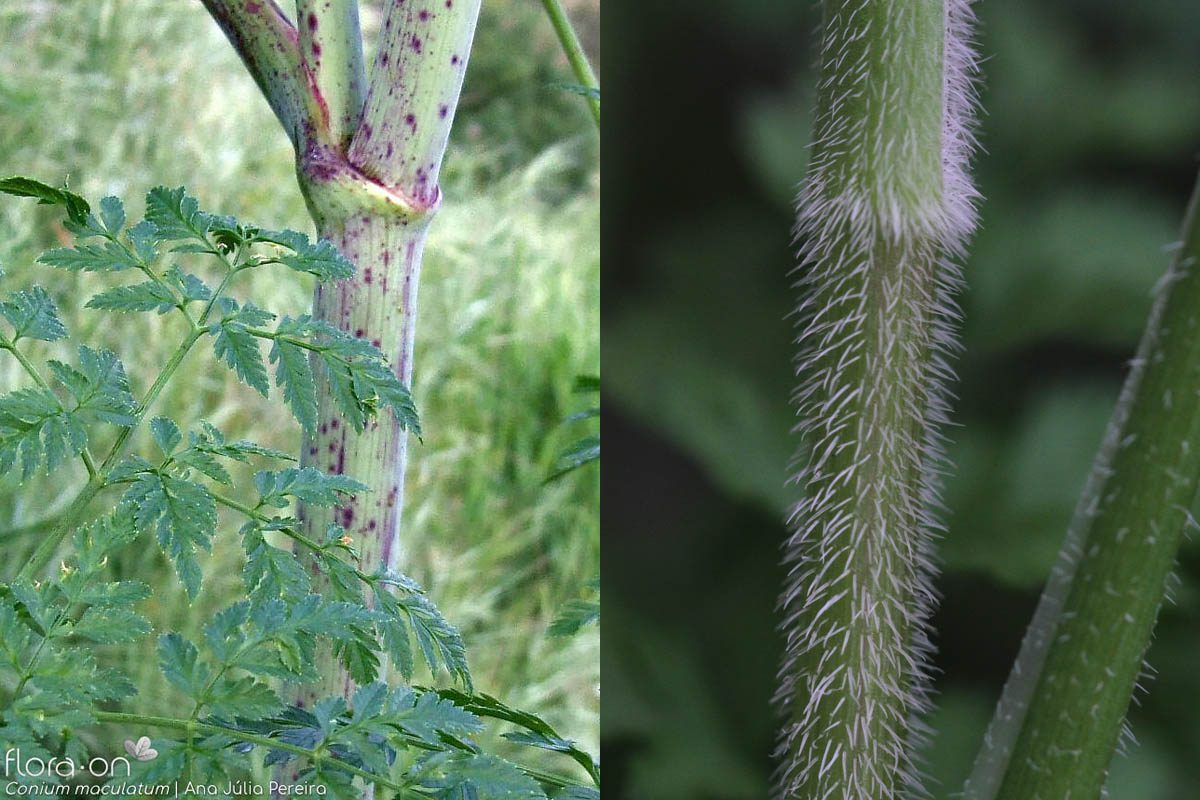
Julia is a writer and landscape consultant from Wollongong with a love of horticulture. She had been an avid gardener for over 30 years, collects rare variegated plants and is a home orchardist. Julia is passionate about learning and sharing her knowledge of plant propagation and plant toxicology. Whether it’s giving advice on landscape projects or sharing tips on growing, Julia enjoys helping people make their gardens flourish.
